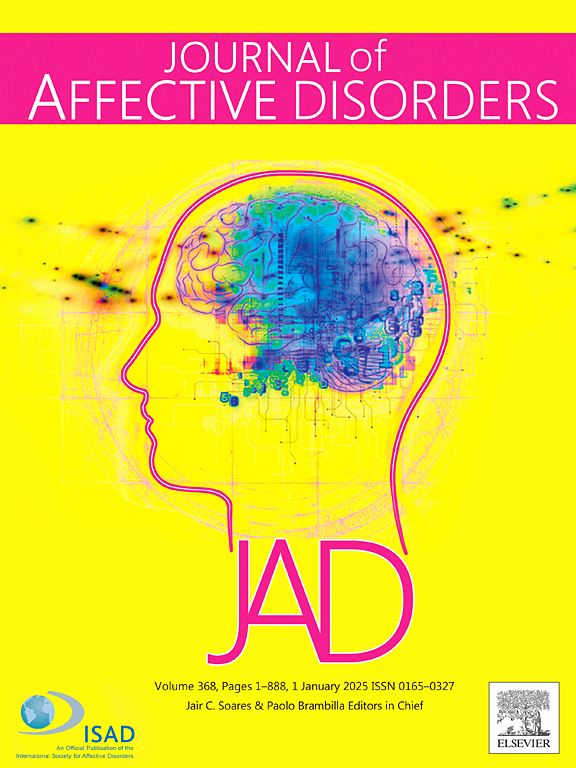Prevalence and sociodemographic configurations of anxiety and depression among caregivers of individuals with mental illness: A meta-analysis and qualitative comparative analysis
IF 4.9
2区 医学
Q1 CLINICAL NEUROLOGY
引用次数: 0
Abstract
Background
Caring for individuals with mental illness involves significant challenges from both the unique symptoms and societal stigma associated with these conditions, often leading to caregiver neglect despite the heightened risk of anxiety and depression among caregivers. This study was designed to quantify the prevalence of anxiety and depression among caregivers and to offer a detailed configurational analysis of their sociodemographic attributes.
Methods
Random-effects meta-analyses were conducted using generalized linear mixed models to calculate the prevalence rates for each study. We explored potential sources of heterogeneity through meta-regression and subgroup analyses. Qualitative Comparative Analysis (QCA) was utilized to identify sociodemographic configurations that contribute to anxiety and depression. The study was pre-registered in PROSPERO (CRD42023478003).
Results
A total of 52 studies involving 10,232 participants were included. The prevalence of depression was 43.91 % (95 % CI: 34.62 %–53.65 %), anxiety was 66.56 % (95 % CI: 48.45 %–80.82 %), and comorbidity was 37.24 % (95 % CI, 19.75 %–58.85 %). QCA identified four sociodemographic configurations contributing to depression and two contributing to anxiety. Key contributors to depression included younger, unmarried, highly educated female caregivers, as well as older, married caregivers caring for patients with schizophrenia. Anxiety was more prevalent among older, married caregivers of patients with schizophrenia and younger, highly educated female caregivers.
Limitations
Differences in the measurement tools used across studies may have impacted the results of this study.
Conclusions
The high prevalence of depression and anxiety among caregivers of individuals with mental illness underscores the need for targeted mental health services and policies.
求助全文
约1分钟内获得全文
求助全文
来源期刊

Journal of affective disorders
医学-精神病学
CiteScore
10.90
自引率
6.10%
发文量
1319
审稿时长
9.3 weeks
期刊介绍:
The Journal of Affective Disorders publishes papers concerned with affective disorders in the widest sense: depression, mania, mood spectrum, emotions and personality, anxiety and stress. It is interdisciplinary and aims to bring together different approaches for a diverse readership. Top quality papers will be accepted dealing with any aspect of affective disorders, including neuroimaging, cognitive neurosciences, genetics, molecular biology, experimental and clinical neurosciences, pharmacology, neuroimmunoendocrinology, intervention and treatment trials.
 求助内容:
求助内容: 应助结果提醒方式:
应助结果提醒方式:


